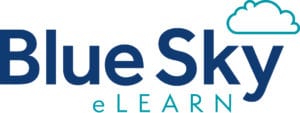As the first episode of 2019, we thought it would be the perfect time to look ahead and focus on the areas that will undoubtedly impact the market for lifelong learning, continuing education, and professional development. We recently surveyed learning businesses to see where they’re planning to focus their efforts in the new year (data that was shared in more detail in our Learning Business Trends & Predictions Webinar) , which helped us identify some of the key trends set to shake up this evolving learning landscape.
In this episode of the Leading Learning podcast, Celisa and Jeff share three emerging trends in store for learning businesses this year, as well as their related implications and ways to prepare.
To tune in, just click below. To make sure you catch all of the future episodes, be sure to subscribe by RSS or on iTunes. And, if you like the podcast, be sure to give it a tweet!
Listen to the Show
Read the Show Notes
[00:18] –This is our first episode of 2019 so we thought it would be a good time to talk about some of the key ways in which we see the market for lifelong learning, continuing education, and professional development shaping up. To do that, we surveyed learning businesses to see where they’re focused – and where they plan to focus – in the new year. We reported on that data in more detail in our recent, Learning Business Trends & Predictions Webinar but we thought we’d adapt some of that content into this episode and really focus on we see as three big emerging trends based on that survey data.
First, by way of background we want to emphasize the context that we always give for this discussion about this market landscape for lifelong learning. A huge part of that is the changing nature of work—check out our related interviews with Heather McGowan and Michelle Weise. So the whole context of work is changing and that is of course a huge driver for the need for learning to change. The reality is, we all need to learn, get into the job market, and then keep learning, adapting, and growing. And with life expectancy continually increasing, that means the need for learning keeps going up as well. As there’s more of a focus on lifelong learning, part of what goes with that is the solidification and maturing of a vibrant, competitive third sector. Basically, it’s getting tough out there and it pays to know the landscape.
3 Emerging Trends for 2019
1. Context will rule content
[03:49] – When we look at some of the top areas where learning business already are focused – or are planning to focus – we see a lot of emphasis on providing personalized learning experiences, social and informal learning experiences, blended experiences, and on microlearning. And, anecdotally, we’re hearing from a range of learning professionals that they are interested in areas like user experience design and curating the learners’ journey. All of this is much more about the learners’ situation and helping to serve and shape the learners’ situation than just about creating a catalog. And most of the top trends covered in the data we have collected are, at least on the surface, very content focused, but if you dig a little deeper, you’ll see it’s not content that is the main driver – it’s providing experiences that really align with the learner’s specific situation and needs and contextualizing content in a way that leads to the most effective learning experiences.
For example, if we look at microlearning, we don’t need “micro” content just for the learner’s convenience. The bigger reason is that we need to be very specific and targeted with the learning we offer so we can really addresses a learners’ particular need at that point of need. Blended learning is another example—it isn’t just an approach to make our lives as learning designers more complex, it creates opportunities for providing the right experiences in the right context. If we look at social, informal, and peer-to-peer learning, those things are, by their very nature, as much as – or more – about context than they are about content. And, of course, the very reason we are focused so much on data is to better understand the learner in context both for marketing and education decisions.
[07:28] – All of this is going to force to us to think differently about how we create, resource, and deliver learning experiences. It seems almost certain, for example, that we will see a decline in traditional events and courses, or rather those more one-off approaches. So we’re going to continue to see evolution and emphasis towards more of the ongoing process versus the single event. One last note – none of this means that content is not important. In fact, we are headed toward a big content problem if only because true personalization will require a tremendous amount of content. Sourcing it is going to become more and more of a challenge – particularly as artificial intelligence (AI) starts making higher demands on behalf of learners. AI at its best is like a lobbyist for learners. So, becoming very agile at both creating and sourcing content will be increasingly critical.
[10:21] – And if you’re trying to get your content together to create good experiences to offer to your learners (in context!), be sure check out Blue Sky eLearn, one of our sponsors for this episode. Blue Sky eLearn is the creator of the Path Learning Management System, an award-winning cloud-based learning solution that allows organizations to easily deliver, track, and monetize valuable education and event content online. Blue Sky also provides webinar and webcast services, helping you maximize your content and create deeper engagement with your audience across the world.
2. Impact
[11:08] – We also see an implication around impact. Underpinning the 7 top areas from our survey data is the challenge of better understanding what matters to our learners and the other stakeholders in their learning—their employers, their patients and clients—and setting goals and metrics to understand how close we’re coming to achieving what we set out to. To really succeed in those 7 areas, we need a much better understanding of our audiences and a much stronger command of learning science and effective marketing practices. If we have that, we can design for real learning, make learners aware of our offerings and their value, deliver behavior-changing learning, and then measure the impact.
[12:25] – And while we’re on the topic of impact, make sure to check out Authentic Learning Labs, the other sponsor for this episode. Authentic Learning Labs is an education company seeking to bring complementary tech and services to empower publishers and L&D organizations to help elevate their programs. The company leverages technology like AI, Data Analytics, and advanced embeddable, API-based services to complement existing initiatives, offering capabilities that are typically out of reach for resource-stretched groups or growing programs needing to scale.
[13:10] – We see a real impact imperative and we’ve heard about data for years. This feels like the year where we’re starting to see things tip and the results from the survey support that. In this increasingly vibrant and competitive third-sector lifelong learning market, if you can’t demonstrate impact, it’s going to get harder and harder.
3. Talent
[15:01] – Finally, when you look at the direction that the data suggests, it is clear that talent will be a major issue. There is a drive toward much more sophisticated learning experiences, toward capitalizing on data, and toward developing and sourcing a great deal of content. Technology will play a big role in all of this, but we are still going to need people who are capable of delivering on what the data suggests. This is already a challenge for most organizations – whether you are a large organization trying to hire and retain staff, or a single individual who needs to find good contractors to help you. Learning businesses are going to need to invest more in the development of current workers and offer the right incentives to retain their best talent and attract new talent. Related to this, is the fact that a potential recession may offer an opportunity –so plan ahead and be prepared to hire.
[18:56] – Also note that the Leading Learning newsletter is one channel for finding talent. We put links to open positions there (for free) so if you have a position open, we’re happy to share that.
And if you’re looking to develop yourself or team professionally, please join us February 20-21, 2019 at Learning • Technology • Design™ (LTD), our annual virtual conference designed specifically for those who work in the business of lifelong learning, continuing education, and professional development.
[20:11] – Below are some questions to ask yourself that go along with the three trends we identified:
- How will you reorganize and reorient to better support context?
- How well do you understand what matters to your learners and decision makers? How do you measure it?
- What are you plans for developing and retaining your team in 2019 and, as needed, attracting the right new talent?
[21:27] – We’ll wrap up by highlighting some of the big trendy areas we may seem to be overlooking: AI, VR/AR, and blockchain. At this point, we aren’t seeing a lot of uptake on these. AI is the one with the most traction and we can expect to see it insinuating its way into just about everything in the coming year. Most learning businesses will be using it whether they are aware of it or not. Our view is that it pays to be aware of it and start figuring out how to be really strategic about it.
In general, this could be a good year to start experimenting with any or all of these (AI, VR/AR, and/or blockchain). We’re at a point where they could offer some competitive advantage, but that will fade rapidly as these become widely adopted technologies.
[25:19] – Wrap-Up
If you are getting value from the Leading Learning podcast, be sure to subscribe by RSS or on iTunes and we would be truly grateful, as it helps us get some data on the impact of what we’re doing.
We’d also appreciate if you give us a rating on iTunes by going to https://www.leadinglearning.com/itunes. We personally appreciate your rating and review, but more importantly reviews and ratings play an important role in helping the podcast show up when people search for content on learning and leading.
And please do be sure to visit our sponsors for this quarter. Find out more about Authentic Learning Labs and Blue Sky eLearn.
Finally, consider telling others about the podcast. You can send a tweet by going to leadinglearning.com/share. You can also Like us on Facebook at facebook.com/leadinglifelonglearning and share us with others there. However you do it, please do help to share the good word about Leading Learning.
[27:27] – Sign off
See Also:




 Learning How to Learn with Dr. Barbara Oakley
Learning How to Learn with Dr. Barbara Oakley
Yes! Great episode!
Another piece of the ‘context will rule content’ concept, one with potentially tremendous value in particular for associations, is ‘influence.’ If I recall it was something I spotted in the Netflix technology team medium site, but I think in the neighborhood of 70% of all content consumed in NF is influenced/driven through some sort of personalized system recommendation. Think about that, from the standpoint of an association, where our members typically have a high degree of trust with us. That potential for influence has an awesome power!?! Granted, there are some significant ~ethical responsibilities here too, but arguably one that associations, by their nature, are suited towards honoring.
I agree. Influence plays a significant role in context – determining it, shaping it – and trust is critical. Personalized learning, when done well, is also more personal. – Jeff